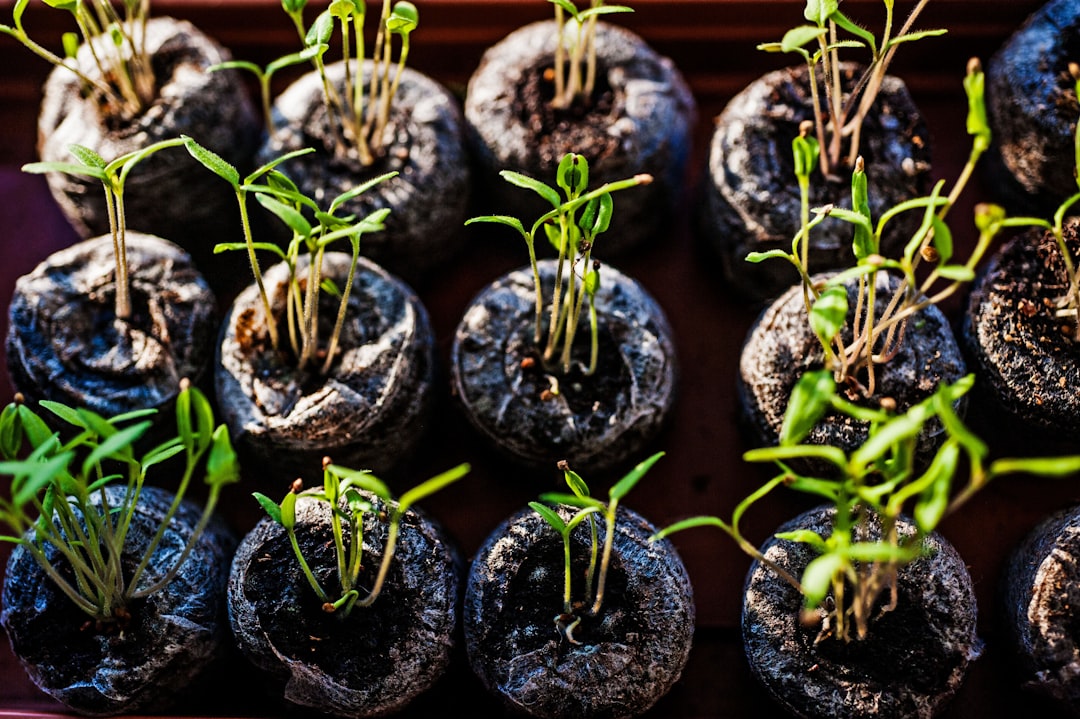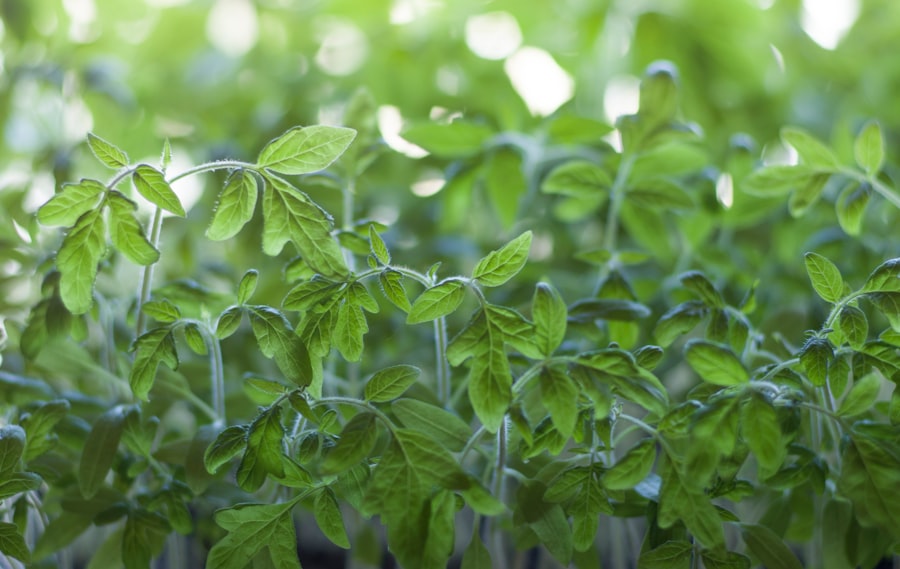Growing Tomato Plants: From Seedlings to Harvest

Tomatoes are one of the most popular and versatile vegetables to grow in a garden. Not only are they delicious and nutritious, but they also add vibrant color to any garden space. In this post, we will cover all aspects of tomato gardening, from choosing the right seedlings to harvesting and preserving your tomatoes. Whether you are a seasoned gardener or a beginner, this guide will provide you with the knowledge and tips you need to successfully grow your own tomatoes.
Choosing the Right Tomato Seedlings for Your Garden
When it comes to choosing tomato seedlings for your garden, there are several factors to consider. First, you need to decide what type of tomato plant you want to grow. There are determinate varieties, which grow to a certain height and produce all their fruit at once, and indeterminate varieties, which continue to grow and produce fruit throughout the season. Determinate varieties are great for small gardens or containers, while indeterminate varieties are better suited for larger spaces.
Once you have decided on the type of tomato plant, you should look for healthy seedlings. Avoid seedlings that have yellow or wilted leaves, as this could be a sign of disease or poor health. Look for seedlings with sturdy stems and a good root system. It is also a good idea to buy seedlings from a reputable nursery or garden center.
Preparing Your Soil for Tomato Planting
Proper soil preparation is essential for the success of your tomato plants. Tomatoes prefer well-draining soil that is rich in organic matter. Before planting your tomatoes, you should amend your soil with compost or well-rotted manure to improve its fertility and drainage.
To prepare your soil for tomato planting, start by removing any weeds or grass from the area where you plan to plant your tomatoes. Loosen the soil with a garden fork or tiller, being careful not to disturb the roots of any nearby plants. Mix in compost or well-rotted manure to improve the soil’s fertility and structure. Finally, level the soil and create raised beds or mounds for planting your tomato seedlings.
Transplanting Tomato Seedlings: Tips and Tricks
| Transplanting Tomato Seedlings: Tips and Tricks |
|---|
| 1. Timing |
| 2. Soil Preparation |
| 3. Watering |
| 4. Fertilizing |
| 5. Hardening Off |
| 6. Transplanting Techniques |
| 7. Mulching |
| 8. Staking and Pruning |
| 9. Common Problems and Solutions |
Transplanting tomato seedlings can be a delicate process, but with the right techniques, you can minimize transplant shock and ensure the success of your plants. The best time to transplant tomato seedlings is when they have developed their first true leaves and are about 6-8 inches tall.
Before transplanting your seedlings, water them thoroughly to ensure that the roots are well-hydrated. Dig a hole in your prepared soil that is deep enough to accommodate the entire root ball of the seedling. Gently remove the seedling from its container, being careful not to damage the roots. Place the seedling in the hole and backfill with soil, firming it gently around the base of the plant.
To minimize transplant shock, it is important to protect your seedlings from extreme temperatures and strong winds. You can use row covers or cloches to provide temporary protection until the seedlings have established themselves in their new environment.
Watering and Fertilizing Tomato Plants for Optimal Growth
Proper watering and fertilization are crucial for the healthy growth of tomato plants. Tomatoes require consistent moisture throughout the growing season, but overwatering can lead to root rot and other diseases. It is important to water your tomato plants deeply and infrequently, allowing the soil to dry out slightly between waterings.
In terms of fertilization, tomatoes are heavy feeders and require regular applications of balanced fertilizer. It is best to use a slow-release organic fertilizer or compost to provide a steady supply of nutrients to your plants. Avoid over-fertilization, as this can lead to excessive foliage growth at the expense of fruit production.
Pruning and Supporting Tomato Plants for Maximum Yield

Pruning and supporting tomato plants are important practices that can help maximize yield and prevent diseases. Pruning involves removing the suckers that grow in the leaf axils of tomato plants. These suckers can divert energy away from fruit production, so removing them can help channel more energy into fruit development.
Supporting tomato plants is also important to prevent them from sprawling on the ground and to provide support for heavy fruit clusters. There are several methods of supporting tomato plants, including using stakes, cages, or trellises. Choose a method that works best for your garden space and the type of tomato plant you are growing.
Preventing Common Tomato Plant Pests and Diseases
Tomato plants are susceptible to a variety of pests and diseases, including aphids, tomato hornworms, and fungal diseases like blight. To prevent these problems, it is important to practice good garden hygiene and take preventive measures.
One of the best ways to prevent pests and diseases is to rotate your tomato plants each year. This helps break the life cycle of pests and reduces the risk of soil-borne diseases. It is also important to keep your garden clean by removing any fallen leaves or debris that could harbor pests or diseases.
If you do encounter pest or disease problems, there are several organic control methods you can use. For example, you can use insecticidal soap or neem oil to control aphids, and hand-pick tomato hornworms off your plants. For fungal diseases, such as blight, you can use copper-based fungicides or apply a baking soda solution to the affected plants.
Harvesting Tomatoes: How to Tell When They’re Ready
Knowing when to harvest your tomatoes is crucial for getting the best flavor and texture. There are several signs that indicate when tomatoes are ready for harvesting. First, the color of the tomato should be fully developed and uniform. For red tomatoes, this means they should be a deep, vibrant red. Next, gently squeeze the tomato to check for firmness. Ripe tomatoes should have a slight give when gently squeezed.
To harvest your tomatoes without damaging the plant, use a sharp pair of pruning shears or scissors to cut the stem just above the fruit. Avoid pulling or twisting the fruit, as this can damage the plant and lead to rotting.
Storing and Preserving Tomatoes for Future Use
If you have an abundance of tomatoes, you may want to store or preserve them for future use. There are several methods for storing and preserving tomatoes, depending on your preferences and available resources.
One simple method is to store tomatoes at room temperature in a cool, dry place. This allows them to ripen slowly and develop their full flavor. However, keep in mind that tomatoes stored at room temperature will have a shorter shelf life.
Another option is to refrigerate your tomatoes, which can help extend their shelf life. However, refrigeration can also affect the flavor and texture of tomatoes, so it is best to use refrigerated tomatoes within a few days.
If you have a surplus of tomatoes, you can also preserve them by canning or freezing. Canning involves cooking the tomatoes and sealing them in jars, while freezing involves blanching the tomatoes and storing them in freezer-safe containers. Both methods can help you enjoy homegrown tomatoes throughout the year.
Using Tomatoes in the Kitchen: Delicious Recipe Ideas
Tomatoes are incredibly versatile in the kitchen and can be used in a wide variety of dishes. From fresh salads to hearty soups and sauces, there are endless possibilities for using tomatoes in your cooking.
One classic recipe idea is Caprese salad, which combines fresh tomatoes with mozzarella cheese, basil leaves, and balsamic glaze. Another popular option is tomato sauce, which can be used as a base for pasta dishes, pizzas, and more. You can also use tomatoes to make salsa, gazpacho, or tomato soup.
When selecting tomatoes for cooking, it is best to choose varieties that are known for their flavor and texture. Heirloom tomatoes, such as Brandywine or Cherokee Purple, are often prized for their rich flavor and juiciness. Cherry tomatoes are also great for snacking or adding to salads.
Saving Seeds from Your Tomato Plants for Next Year’s Garden
Saving seeds from your tomato plants is a great way to ensure a continuous supply of tomatoes in your garden. It is also a cost-effective way to grow tomatoes, as you can save seeds from your own plants instead of buying new seedlings each year.
To save tomato seeds, start by selecting the ripest and healthiest tomatoes from your plants. Cut the tomatoes in half and scoop out the seeds and gelatinous pulp into a container. Add a small amount of water to the container and let it sit for a few days to ferment. This fermentation process helps remove the gelatinous coating from the seeds.
After a few days, rinse the seeds thoroughly to remove any remaining pulp. Spread the seeds out on a paper towel or screen to dry completely. Once dry, store the seeds in a cool, dry place in an airtight container until you are ready to plant them.
Growing tomatoes in your garden can be a rewarding and enjoyable experience. From choosing the right seedlings to harvesting and preserving your tomatoes, there are many aspects to consider when it comes to tomato gardening. By following the tips and techniques outlined in this post, you can successfully grow your own delicious tomatoes and enjoy them throughout the season. So why not start your own tomato garden today? Happy gardening!



